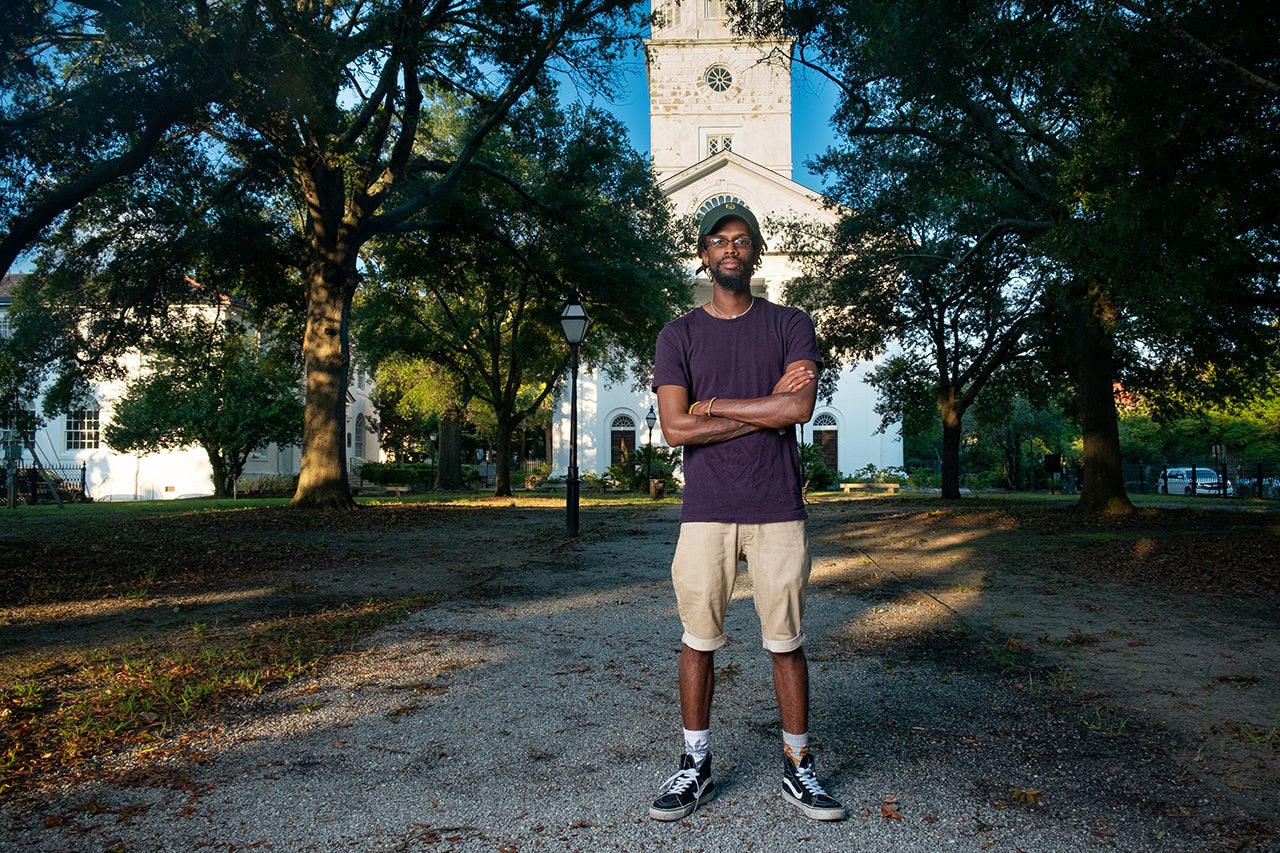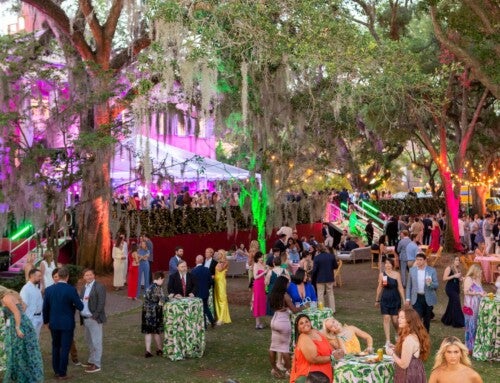The photo is brushed across the page, each stroke illuminating the textured story of the brick wall captured in the image. It’s as if history is revealing itself right before your eyes, with a brown thumb resting neatly in a dimpled fingerprint left by the brick’s enslaved maker hundreds of years ago.
The image, and a collection of others shot by Dontre Major ’17, is part of the “Prints in Clay Photography Exhibit” currently on display at the Charleston Gaillard Center. The exhibit, which documents fingerprints left by enslaved African Americans in the bricks of the Holy City’s historic buildings, is sponsored by the Slave Dwelling Project and the Historic Charleston Foundation, along with the Gaillard Center. The images will be on view through Jan. 18, 2019.
“History cannot be erased or whitewashed, and ignoring the problem does not make it go away,” says Major in his artist statement for the project, noting that his images are meant to spark a dialogue about racial inequality. “It must be recognized and addressed in order for our culture and society to move forward.”
Major, who earned a degree in studio art from the College’s photography program, also has a special artist display featured in the exhibit that explores the more abstract, layered and uncomfortable truths of some of Charleston’s iconic structures, including Second Presbyterian Church and St. John Reformed Episcopal Church.
“Especially since I’m not from Charleston, I never knew anything about this,” says Major, who is originally from Oklahoma City, Oklahoma. “It’s actually amazing when you go and see the actual bricks with fingerprints in them. These are kids’ fingerprints, children who had to climb in the furnace to stack these bricks. Wow.”
A nontraditional student who served in the U.S. Navy for five years before turning his focus to photography, Major, who is African American, chose the College of Charleston’s photography program with a desire to expand his perspective and technical skills in creating multidimensional images.
He credits studio art professor Michelle VanParys’ alternative techniques photography classes for pushing him in new directions, particularly in film development, where he learned to use old photography techniques with new photographs to create more textured images. Fiber paper – along with liquid emulsion processes using sienna type, van dyke brown or silver gelatin manually applied as part of the development process – elevates the depth of his work.
“I’m a huge fan of film,” says Major. “There’s just something about being in that darkroom. You just lose yourself.”
Those skills paid off last year when Major won the Norton M. Seltzer Prize as part of the Halsey Institute of Contemporary Arts’ Young Contemporaries contest for his collection of photos titled “Black AmeriKKKa,” which depicted African Americans during different eras from enslavement to contemporary settings. The award honors artistic work that exhibits a positive communication and showcases a balance of creativity and artistic training. Like his work in “Prints in Clay,” “Black AmeriKKKa” used alternative techniques to give many of the images an appearance of splattering across the film, presenting a raw view into the African American experience.
Major says it was VanParys who suggested he get involved with the “Prints in Clay” project. And he’s glad she did.
“I saw this as a great opportunity not only for myself artistically, but to do work on a subject I’m interested in and would like to know more about,” he says.
Featured image: Dontre Major stands outside Second Presbyterian Church.






